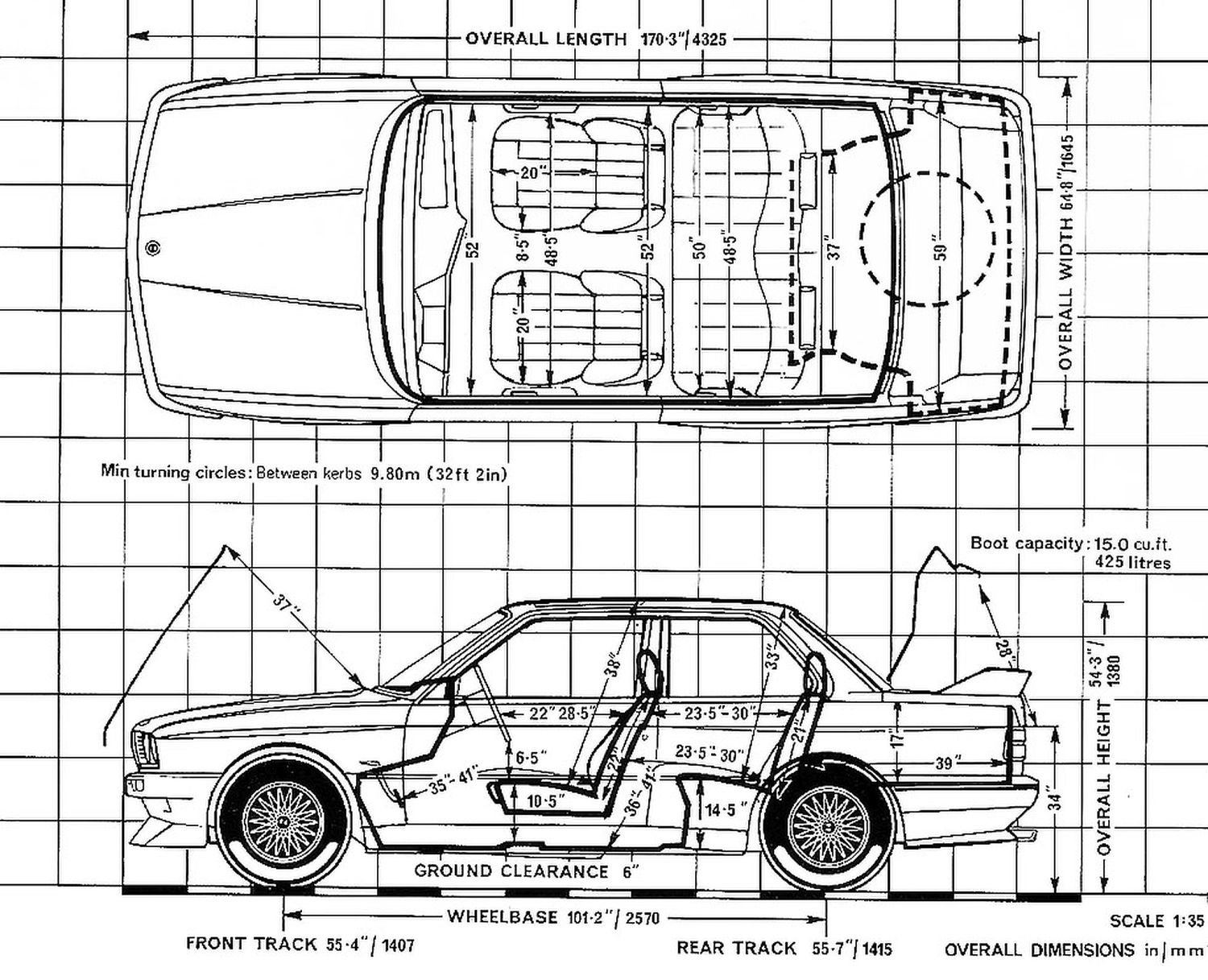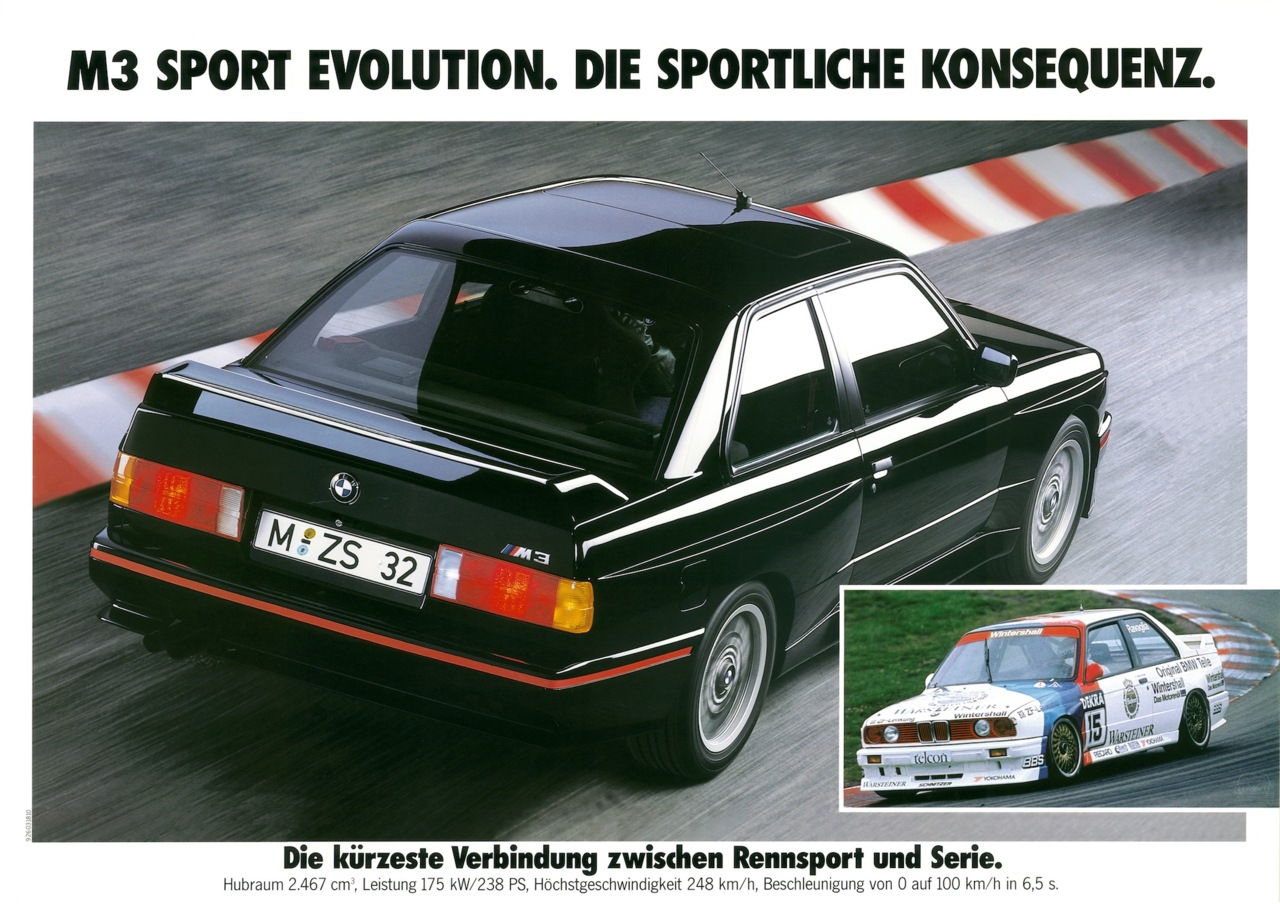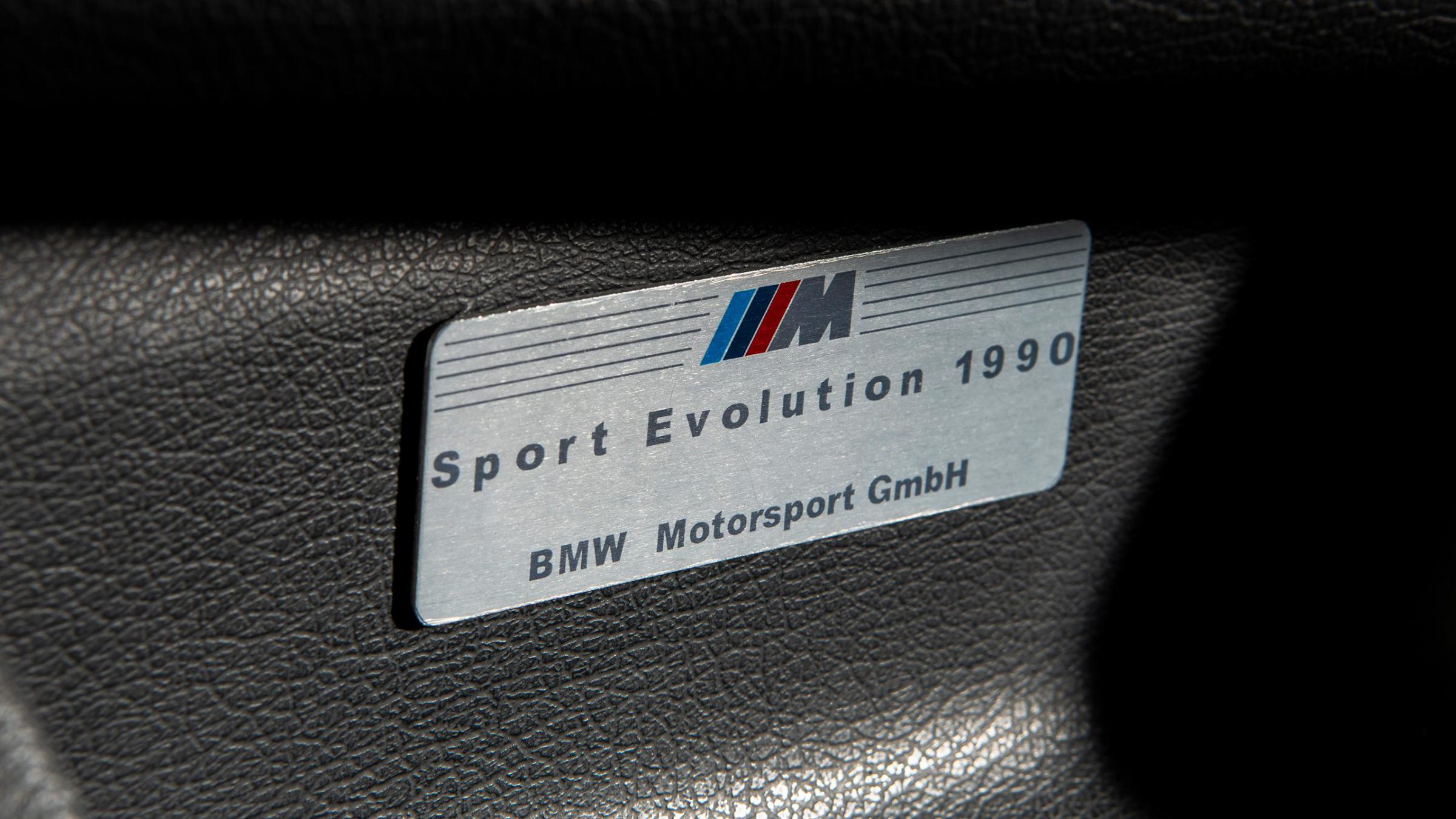|
Moderator
Drives: BMW M2C - BMW X1
Join Date: Jun 2011
Location: Belgium
|
Quote:
Originally Posted by BMWGirlFL

BMW E30 M3 Sport Evolution
|


(source: here)



"BMW E30 M3 - Special Versions
Were there any special editions of the E30 M3?
There were seven special editions of the E30 M3. Three were homologation specials known as the Evoultion I, Evolution II and Sport Evolution. The remaining four were based more closely on regular production models, but had special cosmetic features. These editions were called the Tour de Corse, Europa Meister 88, Johnny Cecotto and Roberto Ravaglia.
What distinguishes an E30 M3 Evolution I?
The initial E30 M3 Evolution was created to homologate refinements to the E30 M3 designed to make it more competitive in its competition guise. The main mechanical alteration was a revised cylinder head, distinguishable by an "E" cast into it, though peak power remained unchanged from the standard non-catalyst M3 at 200 hp (DIN). The model is otherwise identical to a standard European-spec E30 M3 and lacks a numbered dash plaque or any other identifying feature to denote this special series. A total of 505 examples were produced with consecutive VINs (2190283 through 2190787) during March and April of 1987.
What distinguishes an E30 M3 Evolution II?
The E30 M3 Evolution was followed by the E30 M3 Evolution II, 501 of which were built in the Spring of 1988. (NOTE: This model is officially known simply as the "M3 Evolution", since BMW M considers the 505 examples of the first M3 Evolution produced in 1987 as a slight variation on the regular M3 and not a separate edition in its own right.) Unlike the first Evolution, the E30 M3 Evolution II received significant mechanical upgrades to its S14 motor (identifiable by unique valve covers in white with tri-color Motorsport stripes). New pistons raised the compression to 11:1 (from 10.5:1), the air intake was improved, the flywheel lightened and the engine management revised. Power increased to 220 hp and 181 lb/ft of torque, both at the same rpm as the standard non-catalyst S14 motor. The close-ratio Getrag 5-speed manual gearbox carried over unchanged, though the final drive was reduced slightly from 3.25:1 to 3.15:1. Larger 7.5x16-inch alloy wheels with 225/45ZR16 tires, normally an extra-cost option on the standard M3, were fitted as standard to the Evolution II. However, there were no alterations to the suspension or brakes.
The exterior of the Evolution II can be easily identified by its deeper front airdam, additional rear lip spoiler on the trunk lid and front brake cooling ducts in place of foglights. In addition, thinner window glass, plus a lightened trunk lid and bumpers, reduced weight by 22 pounds. The E30 M3 Evolution II was offered only in three exclusive exterior colors: Misano Red (236), Macao Blue metallic (250) and Nogaro Silver metallic (243). The sole interior choice was Silver cloth with matching leather bolsters. Both the front and rear seats were fitted with the tri-color M lapels (as used on the E28 M535i/M5), plus an M foot rest and door sill plates with the "M3" insiginia were included. Finally, a special dashboard plaque denoting the specific number of each example out of 500 was fitted to every Evolution II. All features from the normal M3 option list were also offered on the M3 Evolution II at extra cost, with the exception of the green-tinted windshield stripe, which was standard equipment.
What distinguishes an E30 M3 Sport Evolution?
The E30 M3 Sport Evolution, produced in an edition of 600 during late 1989 and early 1990, was the most extensively modified of the three E30 M3 Evolution editions. The cylinder bore was increased to 95mm (from 84mm) and a long-stroke crank was added to boost displacement to 2,467cc (from 2,305). In addition, the valves were enlarged and a more aggressive cam was fitted. Special nozzles sprayed oil under the pistons to keep them cool. All Sport Evolution motors were equipped with catalysts. The end result was a power increase to 238 hp at 7,000 rpm, though peak torque decreased slightly (over the Evolution II) to 177 lb/ft at 4,750 rpm. These engines use the regular black cam cover but have red spark plug wires. The close-ratio 5-speed Getrag gearbox remained unchanged, but the slightly taller 3.15:1 final drive was fitted.
Like the Evolution II, the Sport Evolution has thinner glass, a lighter trunk and bumpers, and brake cooling ducts in place of foglights. In addition, it also has a smaller fuel tank. For homologation purposes, the Sport Evolution has unique front and rear spoilers with adjustable extensions for greater downforce, even wider front fenders, and reprofiled grille slats with sealed gaps for better aerodynamics, all of which have negligible effect on the street. The M3 Sport Evolution also sits 10mm lower than the normal E30 M3.
The Sport Evolution was only offered only in Jet Black (668) with red bumper stripes or Brilliant Red (308) with black bumper stripes. The wheels are the same 7.5x16-inch cross-spoke items used on other Evolution models, but the spokes are painted a darker Nogaro Silver. As standard, the Sport Evolution was not equipped with any additional convenience items, and even the interior map lights and grab handles were deleted. However, all of the M3's regular comfort options were offered at extra cost. Recaro sport seats with integrated headrests were standard in Anthracite M cloth, with Black Nappa leather and the M tri-color logo on the backrest as an option. A suede-covered M Technic II steering wheel, shift knob (illuminated) and parking brake handle were included, along with red seatbelts. Door sill plates with color "M3" insignias were added and a special plaque denoting each car as a Sport Evolution appears on the center console (though it does not include the unique number of each example out of the 600)."
(source: here)
__________________
///M is art ↔ Artemis
|




 :
: 




